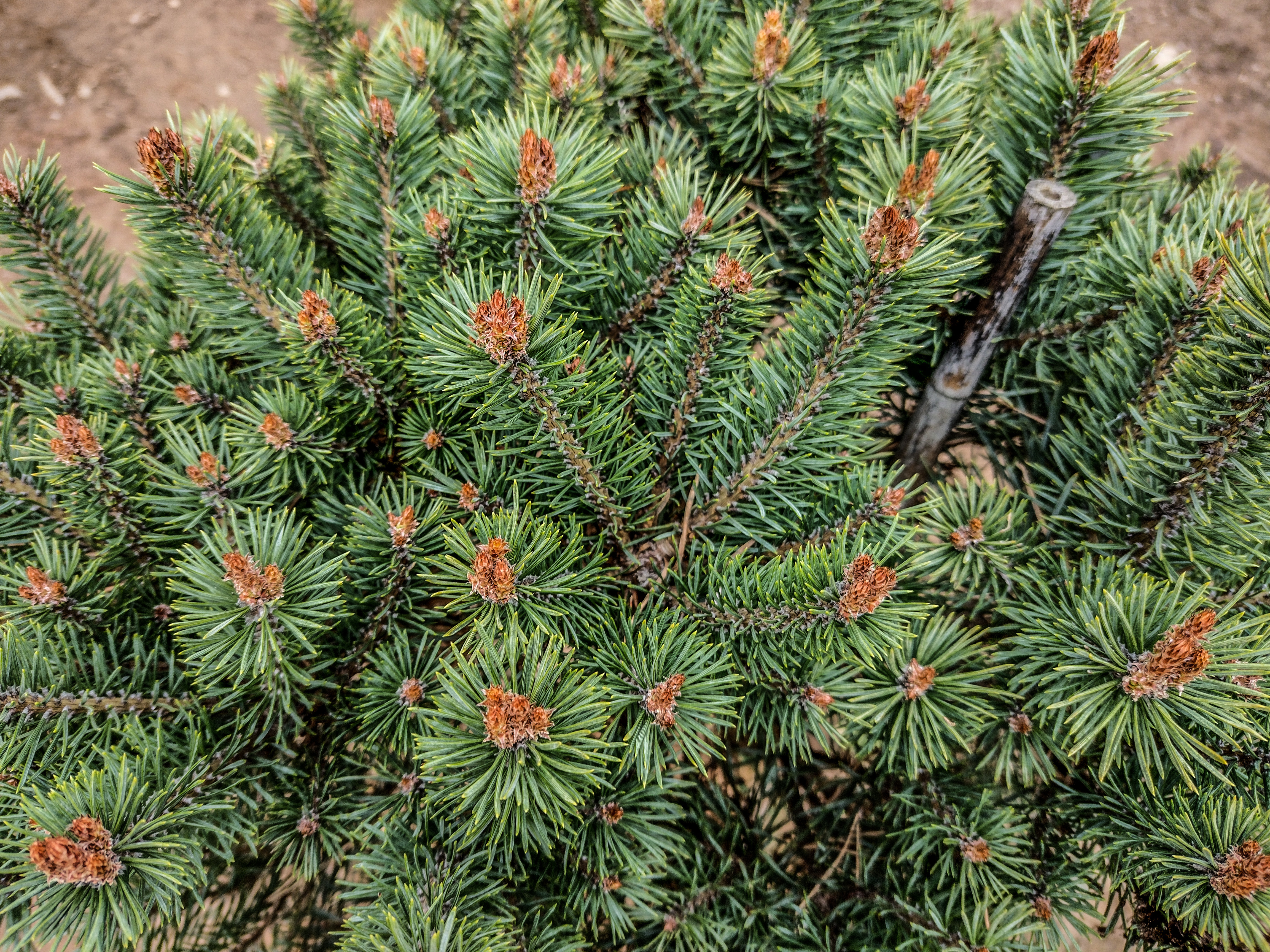Engelmann spruce
(Picea engelmannii)

Description
Picea engelmannii, with the common names Engelmann spruce, white spruce, mountain spruce, and silver spruce, is a species of spruce native to western North America. It is mostly a high-altitude mountain tree but also appears in watered canyons. Picea engelmannii is a medium-sized to large evergreen tree growing to 25–40 metres (82–131 feet) tall, exceptionally to 65 m (213 ft) tall, and with a trunk diameter of up to 1.5 m (4 ft 11 in). The reddish bark is thin and scaly, flaking off in small circular plates 5–10 centimetres (2–4 in) across. The crown is narrow conic in young trees, becoming cylindric in older trees. The shoots are buff-brown to orange-brown, usually densely pubescent, and with prominent pulvini. The leaves are needle-like, 15–30 millimetres (5⁄8–1+1⁄8 in) long, flexible, rhombic in cross-section, glaucous blue-green above with several thin lines of stomata, and blue-white below with two broad bands of stomata. The needles have a pungent odour when crushed. Purple cones of about 1 cm appear in spring, releasing yellow pollen when windy. The cones are pendulous, slender cylindrical, 2.5–8 cm long and 1.5 cm broad when closed, opening to 3 cm broad. They have thin, flexible scales 15–20 mm long, with a wavy margin. They are reddish to dark purple, maturing to light brown 4–7 months after pollination. The seeds are black, 2–3 mm long, with a slender, 5–8 mm long light brown wing. The tree grows in a krummholz form along the fringe of alpine tundras. Engelmann spruce is native to western North America, from central British Columbia in a southwest projection to Southern Oregon and more widely towards the southeast, more sparsely towards Arizona and New Mexico; there are also two isolated populations in Northern Mexico. It is mostly a high-altitude mountain tree, in many areas reaching the tree line, but at lower elevations occupies cool watered canyons. It grows from 520–3,650 m (1,710–11,980 ft) above sea level, rarely lower towards the northwest. It appears in the canyons of the Idaho Panhandle and more limitedly in the northeastern Olympic Mountains; the latter includes exceptionally large specimens, e.g. one 2.1 m (7 ft) thick and 55 m (179 ft) tall. It can be found in the Cascade Range (mostly on the eastern slopes) from elevations of 900–1,800 m (3,000–5,900 ft) and liberally in the Rocky Mountains. It can also be found in the Monashee and Selkirk Mountains, as well as the highlands surrounding the Interior Plateau.
Taxonomic tree:







